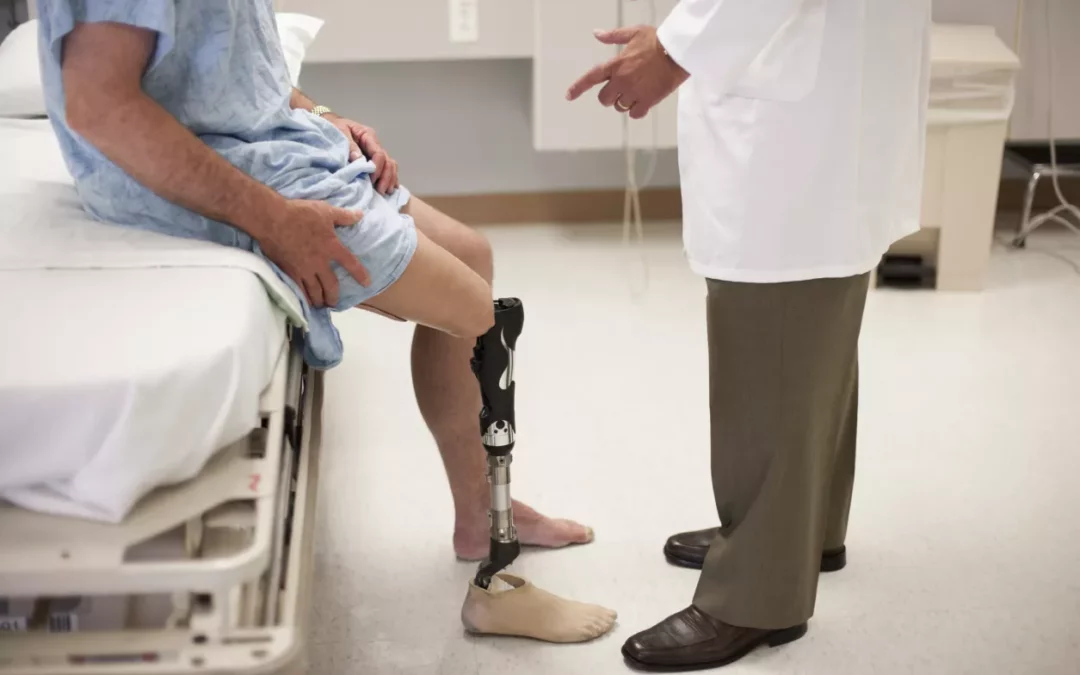A stroke usually comes from a blood clot in the brain. So how can a stroke lead to an amputated leg? Sadly, it’s not that difficult.
One of two primary treatments for stroke is a thrombectomy. A physician punctures an artery — often the femoral artery in the groin. The physician then runs a long, very thin tube through the arteries up to the brain. At the end of the tube, a tiny metal device grabs the blood clot that is blocking blood flow to part of the brain. Then the physician pulls it out.
The leg problem comes from the puncture site in the groin. Physicians have known for a long time that sometimes a new blood clot will form at the puncture site. If the clot grows big enough, it can severely reduce or entirely block blood flow to the leg.
Blood carries oxygen and other nutrients to the body. If blood supply to part of the body is halted long enough, that part of the body will die. “Critical limb ischemia” refers to a severe blockage of blood flow to a limb, placing the limb at risk for loss of function. One commonly cited estimate in the medical literature is that generally a human arm or leg is at risk of irreversible injury if the arm or leg loses blood supply for more than 6 to 8 hours. A limb that loses blood supply for more than 8 hours is at risk of amputation.
So when a clot grows at the puncture site after a thrombectomy, it is important for the nurses and physicians to assess and treat the clot urgently. If treatment of a clot is delayed, the clot may get bigger, may obstruct smaller downstream arteries, and may stick more to the arterial walls and become harder to treat.
This is how a stroke can lead to an amputated leg: acute limb ischemia.
Acute limb ischemia typically causes pain and involves cool skin and abnormal skin color. If you or a loved one has a thrombectomy and later notice pain and abnormal skin color or temperature, tell your nurse about it and ask that a physician come examine the leg.
In cases of acute limb ischemia, a vascular surgeon should be consulted. A vascular surgeon can provide the full range of available treatment. Other physicians cannot.
In cases of critical or severe acute limb ischemia, diagnostic investigation generally should not delay treatment. If for example you have no pulse in your ankle, your physician should not delay treatment in order to get a purely diagnostic CT angiogram. Ask your physician to order an immediate consultation from a vascular surgeon.
When treatment of a severe clot is delayed, the result may be amputation of the leg, and possibly death.
The Bell Law Firm represents clients who have suffered death or catastrophic injury in medical malpractice and other personal injury cases.

